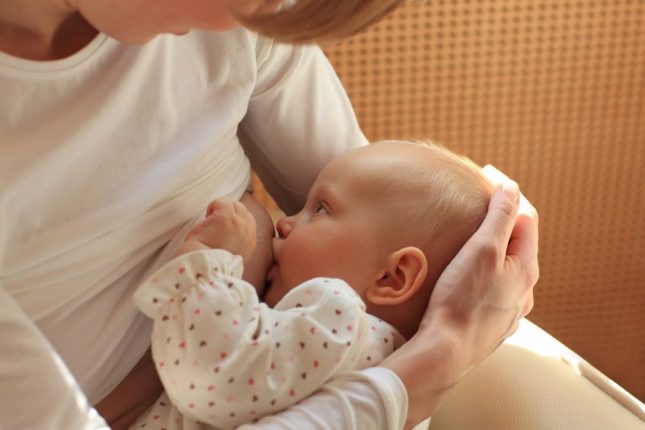Coping with mastitis can be very painful– find out about the causes and preventions and get some great tips for coping with mastitis.
What is mastitis?
Mastitis is inflammation of the breast tissue, most commonly the milk glands and milk ducts and it may occur when women are breastfeeding.
It is different to engorged breasts, which are swollen, hard and hot due to the excessive production of milk, usually in the first week or two after the birth. For some women engorgement can be quite painful! However, it is different to mastitis.
What causes mastitis?
Mastitis is usually caused by a blocked milk duct and this may have been caused by any of the following:
- Baby being poorly latched at the breast is the most common cause – the baby needs to suck on the areola, not the nipple.
- An ill-fitting bra or under-wired bra pressing on the sensitive breast tissue and preventing the flow of milk during a feed.
- Irregular feeding or missing feeds.
- Stress or exhaustion in the mother – possibly linked to incorrect latching onto the breast.
- Cracked nipples may lead to mastitis due to awkward latches at the breast.
What are the symptoms and signs of mastitis?
The common sign of mastitis is a red, hot wedge-shaped area on the skin, over a swollen milk duct in the breast. This may be uncomfortable or painful.
Other signs which indicate that an infection of the duct may have developed are:
- Fever
- Extreme redness over the affected breast
- Flu-like symptoms, such as aches and pains, chills and headaches
- Pain, which can be extreme
What is the treatment for mastitis?
Early treatment can be instigated at home by you – a hot shower and gentle massage down the breast towards the nipple may cure the blockage.
Difficulty latching baby to the breast is common and I strongly recommend getting some help and advice on this one! As a midwife myself I still needed help occasionally to achieve a good latch and it is the key to long-term, successful breastfeeding.
Ensure the baby is opening his or her mouth wide to latch on and then sucking on the areola – the brown area – not on the nipple itself. The nipple should be tucked well out of the way at the top of baby’s mouth otherwise it will become cracked and sore.
If you are feeling unwell, feverish or experiencing pain then visit your doctor or midwife – they will assess the possibility of whether your milk duct or gland has become infected and recommend antibiotics if necessary. If they are in doubt a blood test may be ordered which will confirm the presence of infection.
Antibiotics should be taken for at least 10 days to prevent a relapse of mastitis. It is essential that you finish the course of antibiotics to prevent recurrence of the infection and future resistance of the bacteria to antibiotics.
What are the risks and complications of mastitis?
Non infective mastitis may lead to infective mastitis if the blockage is not resolved quickly.
The main complication of mastitis is infection – if a woman experiences fever or acute pain she should see her midwife or doctor immediately, in case an infection has developed. In these cases antibiotics are usually necessary, as these are often bacterial infections. Antibiotics will be prescribed by the midwife or doctor, taking into account that you are breastfeeding, so no drugs will be prescribed that could harm the baby via the breast milk. In almost every instance you will be advised to continue breastfeeding, for your own sake and the baby’s sake.
Abscesses rarely occur, whereby pus collects in the infected milk duct. These may need to be aspirated or drained surgically, but this is extreme. It is preferable for the mother and the baby that breastfeeding continues, especially on the affected breast.
How can I help myself with mastitis?
Prevention of mastitis is obviously the best option! Ensure the following whenever you can:
- Correct attachment of the baby at the breast
- Avoiding cracked nipples
- Frequent feeding
- Alternating sides where possible
- Where a supportive, well-fitting bra (avoid under-wiring in pregnancy and breastfeeding)
Early cure for mastitis
It is often possible to step in quickly yourself if you suspect early mastitis:
Massage gently over the sore part of the breast, towards the nipple, during a feed.
Stand under a warm shower and gently massage over the breast, again towards the nipple, to encourage the milk to flow freely.
- If you are successful you may experience a sudden spurt of milk as the blockage releases.
- Ensure that you take enough fluids, to prevent dehydration of yourself and your baby.
- Have plenty of rest – call in some friends or whanau to help you, especially if you have other children to care for.
- Check out that your bra fits properly and is not digging in – a night bra may be a good idea until your breasts have returned to normal.
- Taking paracetamol, following the recommended dosage on the box, will help to ease symptoms and will not harm the baby.
Can I still breastfeed if I get mastitis?
It is definitely preferable that you continue to breastfeed your baby. As the baby feeds they will drain the blocked duct far more efficiently than any expressing can do.
Any antibiotics prescribed – should these be necessary – will be ‘baby safe’.







I have been given antibiotics for mastitis today, i finished breastfeeding in september last year. I am in extreme pain and wonder apart from panadol what can i do to help ease the pain as breastfeeding or expressing isn’t really an option as i don’t really have any milk.
Hi Sore,
Hopefully you’ve got this sorted now but there are some great ideas on our Facebook page – https://www.facebook.com/kiwifamilies/posts/464294633629170?comment_id=4538951¬if_t=feed_comment
Hope you’re feeling better!!
Rochelle